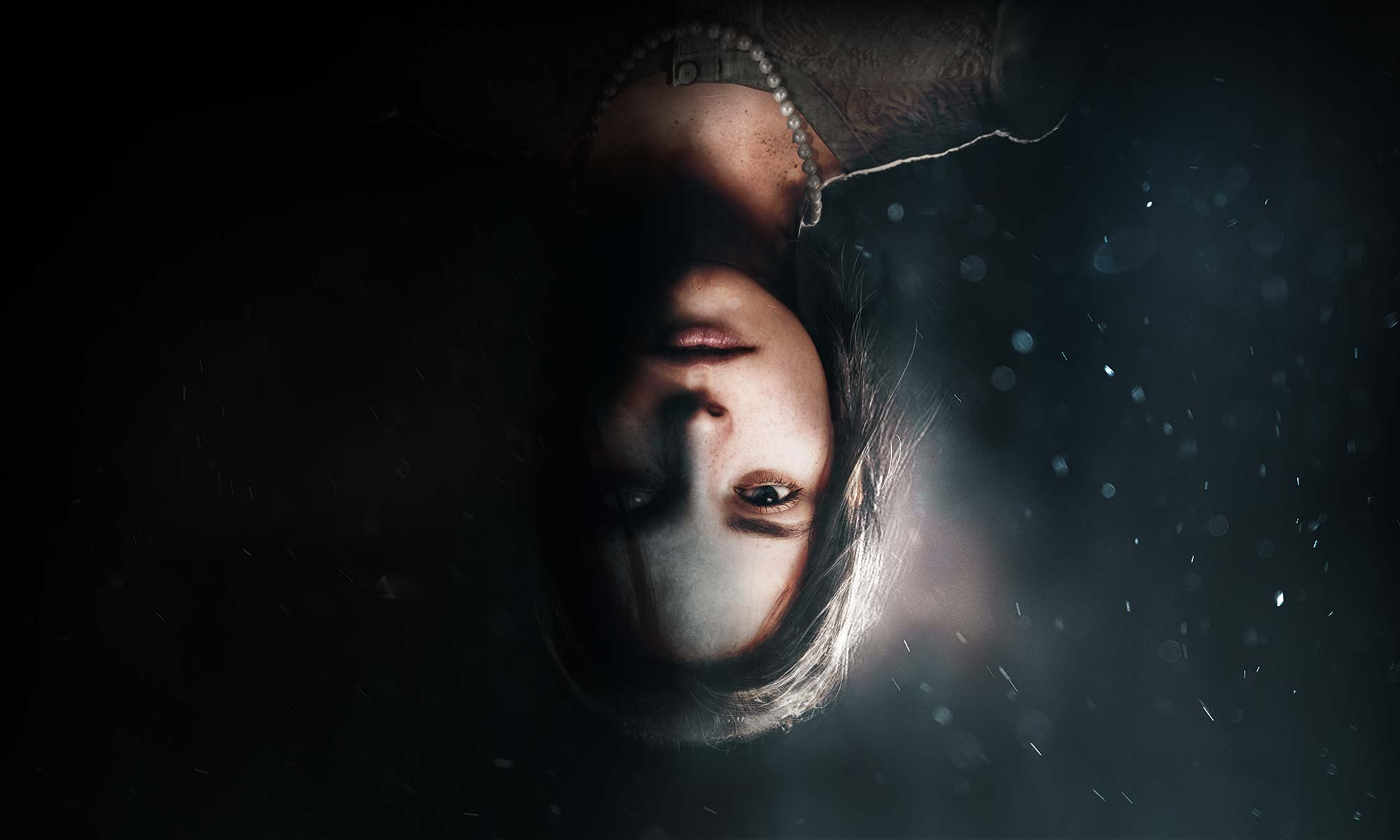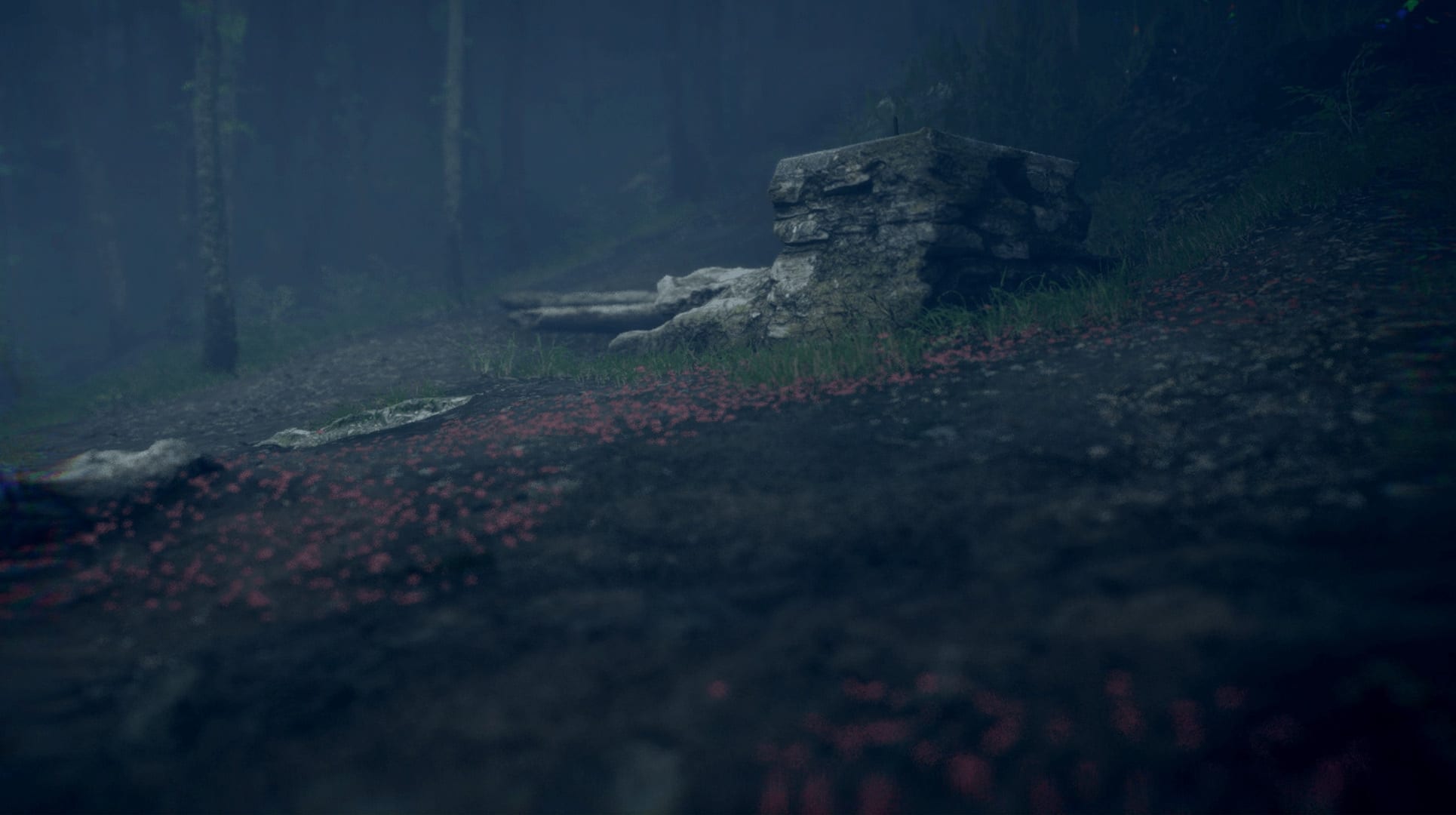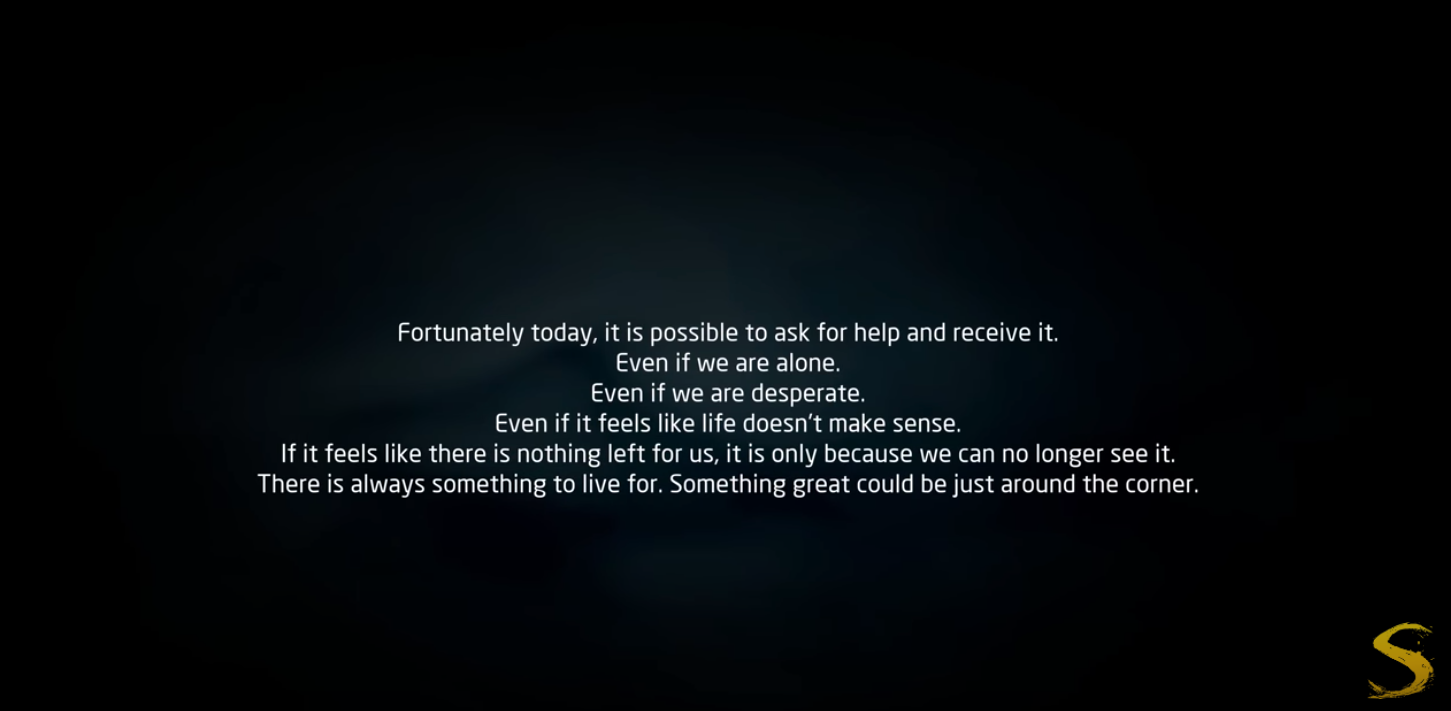Martha Is Dead's Ending Derails the Rest of the Game
A cautionary tale on using mental illness as a plot twist

When I started playing Martha is Dead, I became emotionally invested in the player character Giulia investigating her sister's murder. While World War II rages around them, with partisans fighting in the woods and newspapers reporting on curfews, you can revel in the eerie vibes of coping with horrors happening just outside your doorstep, and around the world.
You can read my previous story about the game, where I mentioned feeling optimistic about the answer to who killed Martha, and why.
Then the last hour of gameplay happened. The revelations that I didn't want to happen but had heard about in spoilers occurred. It took a few minutes to register. Once they did, I started screaming and swearing, going, "I hate this, I hate this". Several people watching with me agreed. When I updated my friend on the ending since I played around 5 AM his time and he was fast asleep, it amazed him I beat him to his typical response to such nonsense.

Martha is Dead started so strong. The mystery felt like a reflection of how we tolerate horrors by trying to solve what is in our control while lacking the outlets to deal with pain. We got an aura similar to Pan's Labyrinth, hinting that a supernatural influence from folk monsters like The White Lady, and the Grim Reaper, may have had something to do with Martha's untimely death. This was my other reason for the emotional investment: we get this sense of the fantastic that allows Giulia to face the daily newspaper reading, and the radio notifications, as well as graves in the woods.
The last twist absolutely dismantles this aura. It feels a lot like when a mirror is shattered, and you're left staring at the pieces on the floor. The mirror is ruined, and someone has to grab a broom or a vacuum. I want the magic back, eeriness and all.

Who Killed Martha?
Most of the game has Giulia, the player character, wandering around her house and the woods to find out who killed her twin Martha while being forced by circumstances to pose as her deaf sister. She's relieved when photo evidence reveals that she wasn't the one responsible, that the photos match her accounts of seeing Martha's body in the water and nearly drowning while pulling her out. Future clues point to the possibility that her mother might have been responsible, with a note written by Martha claiming that Giulia was pregnant and Giulia finding her mother's dress by the river. Giulia believes she has the proof when finding a recording and a letter from Martha, confessing that their maybe-boyfriend Lapo knocked her up and she wanted Giulia to take her place in life.
On the last day of the game, Giulia finds out that her mother wants to commit her to an asylum, sooner rather than later. The doctor in town advises against this because of the bombings and that it may be safer to move to Germany before the end of the war where the clinics are better equipped to help traumatized teenagers, but Irene is adamant. Giulia has stolen one of her father's guns to protect herself and wants to develop the last roll of film that will reveal who killed Martha. She also wants proof that Martha was pregnant, and cuts a fetus out of Martha's dead body, while it’s resting on display in the crypt. I made a lot of "ee" sounds and didn't look while the game directed me to do that. Giulia also confronts her abusive mother and shoots her, though showing regret about doing that, and disposing of her body under a bridge.

Then Giulia develops the last photo. I saw a familiar hat and cane. It looked like her mother. Giulia, however, gasps in horror because the photo allegedly reveals that she killed Martha. Okay. Bad, but okay. A recording of her confronting her mother has Irene say, while held at gunpoint, that on the day at the lake, she found Giulia by the banks in her underwear and not responding for days. Then soldiers invade the house, interrogate her brutally, and kill her father. It felt a little random, but somehow she survived that. She goes and plays with her puppets, to re-enact bits of her childhood before doing the sensible thing and dialing for help. Priorities, Giulia, considering you were nearly beaten to death again.
The story hints that Martha and Giulia didn't exist as twins, but as separate personalities in the same body. A nail in the coffin is Giulia re-enacts her mother going into labor via marionettes, and the doctor only pulls out one baby. She shows a few childhood moments alone, of her mother killing her dog, cooking it into the stew, and force-feeding the meal to a tied-up Giulia. At that point I went, "Oh come on!" and after trying to use a bike to get into town, I gave up because the bike wasn't cooperating. A walkthrough revealed the rest of the story: Giulia got committed shortly before bombs destroyed the nearby town and church, saving her life but locking her up forever. She talks with Martha in a room of mirrors, where Martha offers to take over for her, and slits her wrists. Giulia then takes the player for listening to her story. We get a PSA screencap that you are not alone and please get help.
Somewhere a Strange Horizons editor that contributed to the list of "Stories We've Seen Too Often" list is crying, even if the list has been long-retired. I felt it viscerally, that there was a cheap twist to answer all the questions that had been building up in my mind.

Why The Split Personality Disorder Cliché Is Wrong, Problematic, and Ableist
The game seriously wants us to believe that the past five hours of gameplay were not real. None of the photographs in the darkroom mattered, including the ones that helped us put together a concrete piece of the puzzle that has dogged us for most of the game. The same goes for the two bedrooms, the girls' father having a tearful conversation with the person he thinks is Giulia in the coffin, a note that your maybe-boyfriend Lapo has written saying he can tell who is Martha and who is Giulia, and the fetus you have to rip out from Martha's prepared body in the crypt. If none of that was real, then why the heck did we have to cut up a dead body twice? I would have preferred the skip option for that, which the Sony version included after they agreed to restore the scenes.
This twist brings more questions than answers, about what we were really doing, and what actually happened that day at the lake. Also, I cut up a dead body. It was not fun. Yes, I knew it was part of the gameplay, but I played it to be a good sport with the promise of a satisfying story. The story did not satisfy me.
Using mental illness as a twist in a game feels cheap, to tell us that what we saw was not real. It's common within the horror genre, yes, but horror is trying to move on from that. Nightmare Magazine has a 2020 article about why this crutch is inaccurate and ableist to boot. It cannot understand how Disassociative Identity Disorder and trauma play out in real life and reinforce negative stereotypes and biases that dog real-life people with such conditions.
You can't do that in a game. Sure, Omori did it, but Omori explained at the beginning that what happened in Whitespace and Headspace was not real, and yet it would still affect the main plot. You get some twists that strengthen the story, rather than derail it. Ergo, you don't feel cheated when the last revelation puts the puzzle piece into place. Instead, you get a moment of sadness about context and complete understanding.
I would have preferred if they had stuck with the idea that Irene had killed Martha, mistaking her for Giulia, because it's the most logical. They have shown Irene as consistently physically abusive and hard on Giulia while favoring Martha. Their own father says the same thing when he and Irene argue about her attitude regarding his grief. Giulia herself said that she couldn't have killed Martha because Martha let her oversleep that day, and thus her sister had a head start on her. Martha was dead by the time she arrived and set up the photographs. The game could have then ended with the soldiers coming for Giulia and her father, and her having to hide the truth from everyone after making it to the safety of the church in town. Or, you know, something that didn't invalidate the last five hours of gameplay.

Cultural Context
One factor I try to consider is that not every creator is going to have access to the discussions on social media that speculative fiction writers and editors discuss, especially when factoring in a language barrier (the developers, in this case, are Italy-based). It's highly possible that the creators didn't consider that ableism in horror is a trope that needs discrediting and that 2020s creators are working to rectify.
I reached out to some friends who knew people of Italian descent, and they agreed to ask as well. They mentioned that, with a full disclaimer of being diaspora, that mental health is not a subject often discussed. As a result, men and women may suffer in silence or tolerate machismo. That would explain why Irene's mother has no healthy outlets to deal with her pain, and why Giulia is often the target of her abuse. Her father is ineffective in stopping the abuse period, only keeping Irene from killing Giulia. They don't have the words or the resources for Irene to deal with her trauma, and as a result, she passes it on to the next generation. The line stops with Giulia if we believe at the end of the game that Giulia is in the asylum and has never left.
There is also the possibility that the story ties into a demonic possession narrative, the type that leads to Catholic exorcism. All the characters in the game are Catholic, going to church regularly, and Giulia crosses herself before she cuts open Martha's body. How Irene treats Giulia, she tries beating evil out of her, if we believe in her words, while remaining oblivious to the harm that she causes. When Giulia confronts her at gunpoint, Irene splutters that it all happened years ago, and she thought everyone had forgotten. Giulia often blacks out, waking up in bed or in the family washroom, with no idea of how she got there. She claims she didn't shoot her mother, though she was holding the gun, and it's implied that Martha possesses her in the end, to give Giulia the ending that she desires.
With this, I can understand why the game made these decisions. I don't agree with them and I think that if they had removed that last two twists, along with keeping the situation ambiguous about the White Lady and Death being real, then the game would have been perfect.

Closing the Chapter on Martha
I am not as upset as I was when I finished the game. After a few days of writing this draft, and talking with friends, I can accept that Martha Is Dead didn't realize the huge faux pas that it committed with that last twist, or that it destroyed its own story for one last shock. The creators seemed to not know about the discussions that horror fiction writers have on American social media and in publications. I'm willing to give them credit for the PSA and acknowledge they may have overstepped their boundaries to talk about cyclical abuse. I am also grateful to them for letting me review the game and explore the world they created.
If you are telling a horror game and a period piece that covers mental illness, never forget to consider your audience or your research. You had me until the last hour. If I'm going to play a horror game, I want one with a solid story, where a replay or watching someone's let's play will reveal more than the truth. In addition, I want a story where the magic in wartime is both hopeful and dangerous, a means to escape to another world, good or evil. It can lead us to a world of monsters, or ones where the guns shed more blood than a ghost dragging you into the deep. I hope the next World War II piece, no matter the media, will bring more of that exciting melancholy.